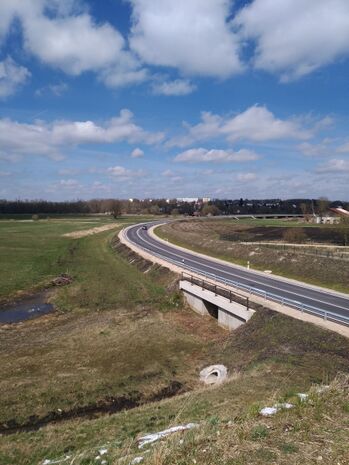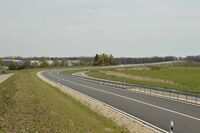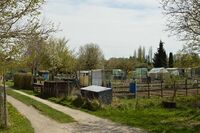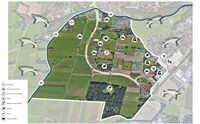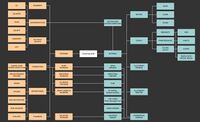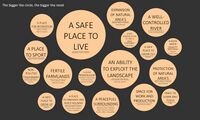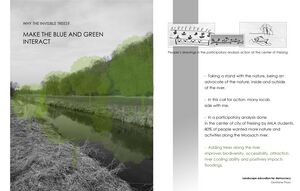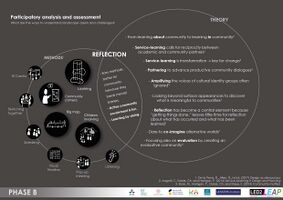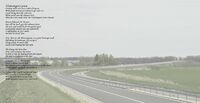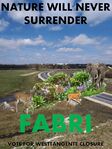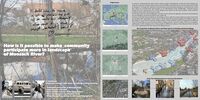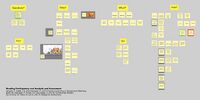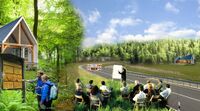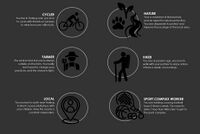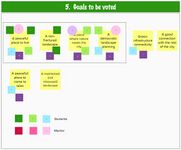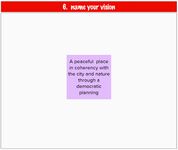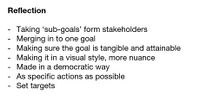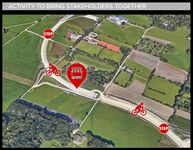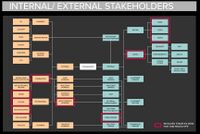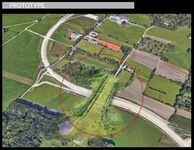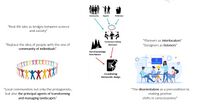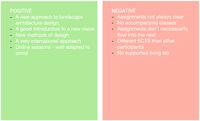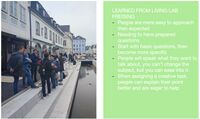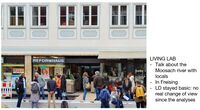Freising-Moosach Landscape Democracy 2022 Team 3: Difference between revisions
Jump to navigation
Jump to search
| (9 intermediate revisions by 2 users not shown) | |||
| Line 23: | Line 23: | ||
| '''Author(s)''' || style="background:Lavender"|''Gentiane Thaci, Fabrizio Albion, Kees van Roon, Delaram Kouhestani, Nora Buffman'' | | '''Author(s)''' || style="background:Lavender"|''Gentiane Thaci, Fabrizio Albion, Kees van Roon, Delaram Kouhestani, Nora Buffman'' | ||
|- | |- | ||
| colspan="3" align="center" style="background:silver"| [[File: | | colspan="3" align="center" style="background:silver"| [[File:P 20220404 130351 vHDR On-min.jpg|alt=|466x466px]] | ||
|- | |- | ||
| ||style="background:Lavender"| | | ||style="background:Lavender"| | ||
| Line 51: | Line 51: | ||
<gallery widths="200" heights="150" perrow="5"> | <gallery widths="200" heights="150" perrow="5"> | ||
File:View west.jpg|Open landscape to the | File:The westtangente.jpg|The Westtangente | ||
File:View east.jpg|Small scale landscape to the | File:View west.jpg|Open landscape to the west | ||
File:View east.jpg|Small scale landscape to the east | |||
</gallery> | </gallery> | ||
| Line 115: | Line 116: | ||
= Phase C: Collaborative Visioning and Goal Setting = | = Phase C: Collaborative Visioning and Goal Setting = | ||
== The Scene in Your Story of Visioning== | == The Scene in Your Story of Visioning== | ||
* | *This scene sums up the vision of a nature-friendly living and democratic solution finding process. This vision is a product of a storyline through different detailed goals and actions, which at the end form the overall vision as seen in the collage below. | ||
<gallery | <gallery widths="200" heights="150" perrow="5"> | ||
File: | File:Vision Image 2022-06-22 at 1.56.48 PM.jpeg|Our vision for the area of focus is: A peaceful place in coherency with the city and the nature through democratic planning. | ||
</gallery> | </gallery> | ||
== The Actors in Your Story of Visioning == | == The Actors in Your Story of Visioning == | ||
* | *For our issue of focus, the "Westtangente" road, there are many actors involved. They are external and internal, but both sides with core responsibilities and importance, as seen in the previous paragraphs. However, for our vision, there are some specific actors that would need to be involved. The picture below shows the actors, together with their common activity. | ||
<gallery | <gallery widths="200" heights="150" perrow="5"> | ||
File: | File:Actors copy.jpg|In this picture there are the actors that will be involved in the discussion and decision making process to fulfill the vision | ||
</gallery> | </gallery> | ||
== The Story of Visioning == | == The Story of Visioning == | ||
* | *The story of visioning is an important process to be followed step by step. The steps go from the brainstorming of sub-goals to the actions that the specific actors need to engage in, in order for the vision to come to life. In context to the "Westtangente" road, the process to visioning was a challenge, since there are so many stakeholders involved. | ||
<gallery | <gallery widths="200" heights="150" perrow="5"> | ||
File: | File:Goals-Brainstorming.jpg|First step: Brainstorming for the sub-goals that are generally product of the stakeholders' needs. | ||
File: | File:Goals to be voted.jpg|Step two: The goals are set to be voted by the people involved. This process narrowed the sub-goals into four. | ||
File: | File:The vision.jpg|Step three: Out of the sub-goals chosen, the overall vision was formed. In each word of this overall vision, we find an aspect of the sub-goals that we need to work on. | ||
File:From goals to actions.jpg|Step four: This step allowed us to define the actions that will help us to reach the goal and the overall vision. These actions are divided through the actors who get to act through an organization of activities that will bring them together for the design decision making process. | |||
</gallery> | </gallery> | ||
== Reflect on Your Story of Visioning == | == Reflect on Your Story of Visioning == | ||
* | *The whole process of arriving at our vision was a step-by-step process with many new issues to discuss and learn from. Below this writing, there is a list of our reflection in the process and what we focused more are trying to define the sub-goals, which are the first step, from the stakeholders themselves. This happened by understanding their core needs. | ||
<gallery | <gallery widths="200" heights="150" perrow="5"> | ||
File: | File:Reflection-Goal-Setting.jpg|Bullet points of reflecting on the story of visioning and goals setting | ||
</gallery> | </gallery> | ||
| Line 155: | Line 151: | ||
= Phase D: Collaborative Design, Transformation and Planning = | = Phase D: Collaborative Design, Transformation and Planning = | ||
== Your Prototyping Action== | == Your Prototyping Action== | ||
* | *The activity of using the road for other purposes for a day of the Month, will help people engage with the road, engage with one-another and to sparkle in them further ideas of how they can help with taking away the fragmentation of the landscape and the areas in both sides of the road. | ||
<gallery | <gallery widths="200" heights="150" perrow="5"> | ||
File: | File:Activity for the prototype.jpg|In this activity, people will get to cycle, walk along the road, do a running marathon, all through being served the local products of eating and drinks. | ||
</gallery> | </gallery> | ||
== The Evolution of Your Prototyping Action == | == The Evolution of Your Prototyping Action == | ||
* | *The prototyping action has a start point at phase C of this project, where we defined the overall vision and the actions to achieve that. Firstly, we thought of how to bring people together, which ended up in the action of experiencing the road for other purposes than cars (as described above). Secondly, the prototype design was a process of different brainstorming ideas in the group, with the target to sparkle an interest and to describe a nature-oriented design, which clashes with the brutality of the road. Therefore, the eco-duct perfectly fulfilled the vision. | ||
<gallery | <gallery widths="200" heights="150" perrow="5"> | ||
</gallery> | </gallery> | ||
== The Plan Behind Your Prototyping Action == | == The Plan Behind Your Prototyping Action == | ||
* | *For the prototyping actions, the first step was to find which stakeholders are a target to see if the design is accepted or experienced as intended. After the stakeholder identification, the clear activities had to be thought of place-wise and time-wise. | ||
<gallery | <gallery widths="200" heights="150" perrow="5"> | ||
File: | File:Involved stakeholders for the prototype.jpg|The external and internal stakeholders as targets of the whole prototyping process | ||
File: | File:The plan behind the activities.jpg|The detailed activity plan for the prototyping action. | ||
</gallery> | </gallery> | ||
== The Realization of Your Prototyping Action == | == The Realization of Your Prototyping Action == | ||
* | *This prototype is bigger in size and in realization effort, that is why it only serves as a poster throughout the road where the people will be having the activities mentioned above. This prototype serves to show to people how this area could become together again, but also to sparkle interest and new ideas in people's minds, a sparkle which will encourage them to be involved in the design process. | ||
<gallery | <gallery widths="200" heights="150" perrow="5"> | ||
File: | File:Prototype.jpg|The prototype: Connecting the two landscapes that the "Westtangente" road has fragmented. This connection would be for humans, as well as animals. | ||
</gallery> | </gallery> | ||
== Reflect on Your Prototyping Action == | == Reflect on Your Prototyping Action == | ||
* | *After the whole prototyping action evaluation and discussion with the mentors, we realized three major important aspects to prototyping actions. These aspects can be found in the picture below. | ||
<gallery | <gallery widths="200" heights="150" perrow="5"> | ||
File: | File:Reflection on prototype.jpg|Reflections from the prototyping action. | ||
</gallery> | </gallery> | ||
| Line 204: | Line 190: | ||
= Phase E: Collaborative Evaluation and Future Agendas = | = Phase E: Collaborative Evaluation and Future Agendas = | ||
== Collaborative Evaluation and Landscape Democracy Reflection == | == Collaborative Evaluation and Landscape Democracy Reflection == | ||
* | *The term "Landscape Democracy" was new for all the actors in the group, therefore its meaning and process is well understood and appreciated by the whole group. The picture below shows some of the key explanations to this community involving way of design, which stuck with us through the lectures and the readings. This way of involving stakeholders and their needs will forever be a process followed in our future projects. | ||
<gallery | <gallery widths="200" heights="150" perrow="5"> | ||
File: | File:Reflection on Landscape democracy.jpg|Evaluation of "Landscape Democracy" as a general new term about the whole actors of this group. | ||
</gallery> | </gallery> | ||
== The Actors in your Collaborative Evaluation == | == The Actors in your Collaborative Evaluation == | ||
* | *The actors in the collaborative evaluation are the "Open-Air office" group, which also worked together in the this whole project. | ||
<gallery | <gallery widths="200" heights="150" perrow="5"> | ||
File: | File:Actors of collaborative evaluation.jpg|The actors in our collaborative evaluation: Gentiane Thaci, Fabrizio Albion, Kees van Roon and Delaram Kouhestani | ||
</gallery> | </gallery> | ||
== Reflection on the Online Seminar == | == Reflection on the Online Seminar == | ||
* | *Since the whole topic of the "Landscape Democracy" was a new topic for us, the excitement for the involvement in the online seminar was always high. However, together with the positive issues listed below, come some negative issues as well, which are more like recommendations for this seminar to go even more fluently. | ||
<gallery | <gallery widths="200" heights="150" perrow="5"> | ||
File: | File:Reflection on the online seminar.jpg|These are the positive and negative aspects of the online seminar in our points of view. | ||
</gallery> | </gallery> | ||
== Reflection on your | == Reflection on your Liviinvolvementcess == | ||
* | *The living lab process taught us quite some valuable aspects of how to engage with people about a specific topic and how to manage the conversation into achieving the purpose of the living lab. | ||
<gallery | <gallery widths="200" heights="150" perrow="5"> | ||
File: | File:Reflection on the living lab process.jpg|Some of the issues spotted and learned by our team through the living lab process. | ||
</gallery> | </gallery> | ||
| Line 242: | Line 220: | ||
*insert text here | *insert text here | ||
<gallery | <gallery widths="200" heights="150" perrow="5"> | ||
File: | File:Living lab code of conduct.jpg|In this picture and writing, it is described the target people involved and the living lab approach in general. | ||
</gallery> | </gallery> | ||
== Process Reflection == | == Process Reflection == | ||
*insert text here | *insert text here | ||
Latest revision as of 09:25, 14 July 2022
>>>back to working groups overview
For help with editing this Wiki page use this link.
For more details on assignments and key readings please use this link.
Landscape Democracy Rationale
- Why do you think this case is relevant? What is your hypothesis considering the landscape challenges?
- South-west Freising is relevant because of the clear challenges the community faces. This area faces climate change at first hand, through being a flood risk zone. The building of the "Westtangente" is a very controversial issue for the local community, also the city of Freising is taking steps in expanding through this area.
Location and Scope
- You can edit this map with the map editor
Phase A: Mapping Your Community
Welcome to Your Community and Their Landscape
- The project area is divided by the road "Westtangente" that has been finished in January 2022. The eastern part is characterized by an open agricultural landscape bordered by the "Moosach" river, whereas the western part has a small-scale landscape with different uses. These different uses result in different stakeholders that are in the area.
Groups of Actors and Stakeholders in Your Community
- As you may see in the map below, there are different stakeholders in this area, both internal and external. In internal stakeholders, there are a few trends visible. There are the residential areas in North, the industrial actors in South-East, the farmers being mostly to the West and the scattering of allotments which mix internal and external stakeholders.
Relationships Between Your Actors and Groups
- In the maps below, you may see the connection and division of the stakeholders, as well as their needs and interests and the power and impact each stakeholder possesses.
Summary of Your Learnings from the Transnational Discussion Panel
- The Transnational Discussion Panel was very useful and interesting in terms of the different approaches and methods that each group applied for their own project area. The major difference between the groups was the scale each-one of us used to specify the challenges. What we have learned and what we will use in the next procedures is looking into the powerful stakeholders more. This way, evaluate the political actors more in a larger scale.
Theory Reflection
- The reading list and lectures as part of this module were useful to realize how important the role of democratic programs is in the landscape and how to implement this. In particularly, understanding our rule as "interlocutors' and bridge-makers between science and society. Also the lectures by Sonja Hörster have been useful to use the methods correctly.
References
- Google maps; Council of Europe:The European Landscape Convention, 2000; LED Team:Landscape Education for Democracy, 2019; Disorientation as a Learning Objective, Journal of Planning Education and Research, 2020
Phase B: Democratic Landscape Analysis and Assessment
Gentiane Thaci "Make the blue and green interact"
Kees van Roon "Westtangente poem"
Fabrizio Albion "Westtangente Closure"
Delaram Kouhestani "Analysis of Moosach Waterscape, Community-Engaged Design"and "Get to Know Communities, Reading Participatory Analysis and Assessment, Phase02"
Phase C: Collaborative Visioning and Goal Setting
The Scene in Your Story of Visioning
- This scene sums up the vision of a nature-friendly living and democratic solution finding process. This vision is a product of a storyline through different detailed goals and actions, which at the end form the overall vision as seen in the collage below.
The Actors in Your Story of Visioning
- For our issue of focus, the "Westtangente" road, there are many actors involved. They are external and internal, but both sides with core responsibilities and importance, as seen in the previous paragraphs. However, for our vision, there are some specific actors that would need to be involved. The picture below shows the actors, together with their common activity.
The Story of Visioning
- The story of visioning is an important process to be followed step by step. The steps go from the brainstorming of sub-goals to the actions that the specific actors need to engage in, in order for the vision to come to life. In context to the "Westtangente" road, the process to visioning was a challenge, since there are so many stakeholders involved.
Reflect on Your Story of Visioning
- The whole process of arriving at our vision was a step-by-step process with many new issues to discuss and learn from. Below this writing, there is a list of our reflection in the process and what we focused more are trying to define the sub-goals, which are the first step, from the stakeholders themselves. This happened by understanding their core needs.
Phase D: Collaborative Design, Transformation and Planning
Your Prototyping Action
- The activity of using the road for other purposes for a day of the Month, will help people engage with the road, engage with one-another and to sparkle in them further ideas of how they can help with taking away the fragmentation of the landscape and the areas in both sides of the road.
The Evolution of Your Prototyping Action
- The prototyping action has a start point at phase C of this project, where we defined the overall vision and the actions to achieve that. Firstly, we thought of how to bring people together, which ended up in the action of experiencing the road for other purposes than cars (as described above). Secondly, the prototype design was a process of different brainstorming ideas in the group, with the target to sparkle an interest and to describe a nature-oriented design, which clashes with the brutality of the road. Therefore, the eco-duct perfectly fulfilled the vision.
The Plan Behind Your Prototyping Action
- For the prototyping actions, the first step was to find which stakeholders are a target to see if the design is accepted or experienced as intended. After the stakeholder identification, the clear activities had to be thought of place-wise and time-wise.
The Realization of Your Prototyping Action
- This prototype is bigger in size and in realization effort, that is why it only serves as a poster throughout the road where the people will be having the activities mentioned above. This prototype serves to show to people how this area could become together again, but also to sparkle interest and new ideas in people's minds, a sparkle which will encourage them to be involved in the design process.
Reflect on Your Prototyping Action
- After the whole prototyping action evaluation and discussion with the mentors, we realized three major important aspects to prototyping actions. These aspects can be found in the picture below.
Phase E: Collaborative Evaluation and Future Agendas
Collaborative Evaluation and Landscape Democracy Reflection
- The term "Landscape Democracy" was new for all the actors in the group, therefore its meaning and process is well understood and appreciated by the whole group. The picture below shows some of the key explanations to this community involving way of design, which stuck with us through the lectures and the readings. This way of involving stakeholders and their needs will forever be a process followed in our future projects.
The Actors in your Collaborative Evaluation
- The actors in the collaborative evaluation are the "Open-Air office" group, which also worked together in the this whole project.
Reflection on the Online Seminar
- Since the whole topic of the "Landscape Democracy" was a new topic for us, the excitement for the involvement in the online seminar was always high. However, together with the positive issues listed below, come some negative issues as well, which are more like recommendations for this seminar to go even more fluently.
Reflection on your Liviinvolvementcess
- The living lab process taught us quite some valuable aspects of how to engage with people about a specific topic and how to manage the conversation into achieving the purpose of the living lab.
Your Living Lab Code of Conduct
- insert text here
Process Reflection
- insert text here
